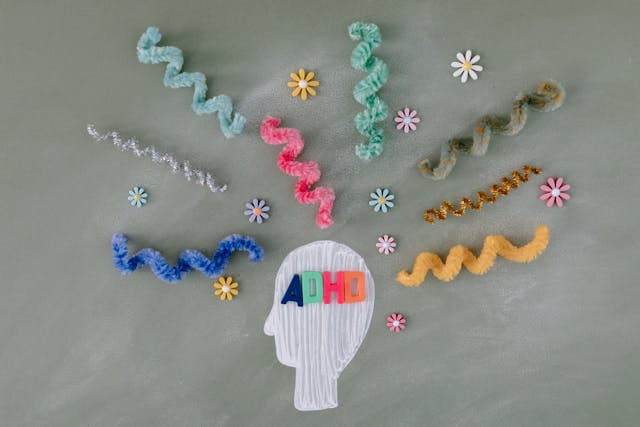Attention-Deficit/Hyperactivity Disorder (ADHD) is one of the most common neurodevelopmental disorders affecting both children and adults. It impacts millions of people globally, with an estimated prevalence rate of around 5-10% in children and approximately 2.5% in adults (Faraone et al., 2015). ADHD manifests as persistent patterns of inattention, hyperactivity, and impulsivity, which can interfere with functioning in social, academic, and occupational settings. This article delves into everything you need to know about ADHD, including its symptoms, causes, diagnosis, treatment options, and its impact on daily life.
What is ADHD?
ADHD is a chronic condition characterized by inattention (difficulty focusing or staying on task), hyperactivity (excessive movement or fidgeting), and impulsivity (hasty actions that occur without forethought). It is typically diagnosed in childhood, but symptoms can persist into adulthood for some individuals. ADHD affects the brain’s executive functions, which involve planning, organization, time management, and impulse control.
Symptoms of ADHD
ADHD symptoms are divided into two main categories: inattention and hyperactivity-impulsivity. These symptoms can vary significantly between individuals, and not everyone will exhibit the same combination.
Inattention:
- Difficulty sustaining attention in tasks or play
- Frequent careless mistakes in schoolwork or work
- Struggling to follow through on instructions and finish tasks
- Avoidance of tasks that require sustained mental effort (e.g., homework, lengthy reports)
- Losing things necessary for tasks (e.g., pencils, wallets, keys)
- Easily distracted by external stimuli
- Forgetfulness in daily activities
Hyperactivity and Impulsivity:
- Fidgeting or squirming in seats
- Inability to stay seated in situations where it’s expected (e.g., classrooms, meetings)
- Running or climbing in inappropriate situations
- Difficulty engaging in activities quietly
- Talking excessively
- Interrupting others or intruding on conversations
- Acting without thinking about consequences
Types of ADHD
ADHD is diagnosed in three distinct types based on which symptoms are most prominent:
- Predominantly Inattentive Presentation: The individual mainly struggles with attention, focus, and organizational skills.
- Predominantly Hyperactive-Impulsive Presentation: Hyperactivity and impulsive behaviors are more pronounced.
- Combined Presentation: A combination of both inattention and hyperactivity-impulsivity symptoms.
Causes of ADHD
The exact causes of ADHD are not fully understood, but research suggests a combination of genetic, neurological, and environmental factors.
- Genetics: ADHD often runs in families, and studies suggest that genetic factors may play a significant role. According to the National Institute of Mental Health (NIMH), about 75% of ADHD cases have a genetic component (NIMH, 2020).
- Brain Structure and Function: Neuroimaging studies have shown that people with ADHD may have differences in certain brain regions, particularly those involved in attention and executive function (Shaw et al., 2007).
- Environmental Factors: Exposure to certain environmental factors during pregnancy, such as alcohol or tobacco, low birth weight, and lead exposure, may increase the risk of ADHD.
- Premature Birth: Babies born prematurely or with low birth weights are more likely to develop ADHD.
Diagnosis of ADHD
ADHD is diagnosed based on behavioral symptoms, often using a combination of questionnaires, interviews, and medical evaluations. There is no specific test for ADHD, but mental health professionals use criteria from the Diagnostic and Statistical Manual of Mental Disorders (DSM-5) to make a diagnosis. For children, these symptoms must be present before the age of 12 and in more than one setting (e.g., at home and at school) to be diagnosed as ADHD.
Common tools used in the diagnostic process include:
- Conners’ Rating Scales: For assessing ADHD symptoms in children and adolescents.
- ADHD Rating Scale (ADHD-RS): Used by clinicians to evaluate ADHD symptoms over the past 6 months.
ADHD in Children vs. Adults
While ADHD is most often diagnosed in childhood, many adults continue to experience symptoms. Adults may not exhibit the same hyperactivity as children but are more likely to face challenges with organization, time management, and controlling impulses. According to the American Psychiatric Association, about 60% of children diagnosed with ADHD continue to have symptoms in adulthood (APA, 2022).
In adults, ADHD can present as:
- Chronic lateness and forgetfulness
- Difficulty with job performance
- Poor organizational skills
- Difficulty controlling anger or frustration
- Risk-taking behaviors
Impact of ADHD on Daily Life
ADHD can affect various aspects of life, including academic achievement, professional success, and social relationships. Without appropriate management, individuals with ADHD may struggle with:
- Academic Performance: Children with ADHD often face academic challenges due to difficulties focusing, completing assignments, and adhering to school routines. According to the Centers for Disease Control and Prevention (CDC), children with ADHD are more likely to experience lower grades, expulsions, and higher dropout rates.
- Workplace Challenges: Adults with ADHD may struggle with meeting deadlines, managing tasks, and maintaining focus, affecting their professional lives. A study published in The Journal of Clinical Psychiatry found that ADHD in adults is associated with an annual loss of $4,336 per individual due to reduced work productivity (Kessler et al., 2005).
- Relationships: Impulsive behaviors and inattentiveness can affect personal relationships, leading to misunderstandings, conflicts, or feelings of neglect.
Treatment of ADHD
ADHD treatment typically involves a combination of medication, behavioral therapy, and lifestyle changes. Early diagnosis and intervention can significantly improve outcomes.
1. Medications:
- Stimulants: The most commonly prescribed medications for ADHD are stimulants, such as methylphenidate (Ritalin, Concerta) and amphetamines (Adderall, Vyvanse). These medications work by increasing dopamine and norepinephrine levels in the brain, which helps improve focus and attention.
- Non-stimulants: In cases where stimulants are not effective or cause side effects, non-stimulant medications like atomoxetine (Strattera) or guanfacine (Intuniv) may be prescribed.
2. Behavioral Therapy:
Behavioral therapy focuses on modifying behaviors and developing skills to manage ADHD symptoms. Techniques such as positive reinforcement, time management strategies, and organizational skills training are often used.
3. Parent Training:
For children with ADHD, parent training can help caregivers learn effective strategies to manage their child’s behavior, set clear expectations, and provide consistent consequences for behavior.
4. Cognitive-Behavioral Therapy (CBT):
CBT is particularly beneficial for adults with ADHD. It helps individuals develop coping mechanisms, address negative thought patterns, and improve problem-solving skills.
ADHD and Co-Occurring Conditions
ADHD frequently coexists with other mental health or behavioral conditions, such as:
- Anxiety Disorders: According to the Anxiety and Depression Association of America, approximately 50% of adults with ADHD also have an anxiety disorder.
- Depression: ADHD is often associated with mood disorders, including depression, particularly when individuals struggle to manage their symptoms.
- Learning Disabilities: Children with ADHD may also have learning disabilities such as dyslexia or difficulties with reading, writing, or math.
- Oppositional Defiant Disorder (ODD): Some children with ADHD may exhibit defiance and hostility towards authority figures, which can interfere with social and academic life.
ADHD Myths and Misconceptions
ADHD is often misunderstood. Common myths include:
- Myth 1: “ADHD is just an excuse for bad behavior.”
Fact: ADHD is a neurodevelopmental disorder, not a behavioral choice. - Myth 2: “ADHD only affects children.”
Fact: While commonly diagnosed in children, ADHD affects many adults. - Myth 3: “Everyone with ADHD is hyperactive.”
Fact: Not all individuals with ADHD exhibit hyperactivity. Many struggle primarily with inattention.
Living with ADHD: Tips for Managing Symptoms
Living with ADHD can be challenging, but with the right strategies, individuals can thrive. Here are a few practical tips for managing ADHD symptoms:
- Create a Routine: Structure and routines help individuals with ADHD stay organized and reduce forgetfulness.
- Use Visual Reminders: Sticky notes, alarms, and checklists can serve as helpful reminders for important tasks.
- Break Tasks into Smaller Steps: Breaking large tasks into smaller, more manageable parts can prevent overwhelm.
- Practice Mindfulness: Techniques such as mindfulness meditation can improve focus and reduce impulsivity.
- Seek Support: Joining a support group or seeking professional therapy can provide additional coping mechanisms and support.
Conclusion
ADHD is a complex disorder that impacts millions of people globally. Although it presents significant challenges, it can be managed effectively with proper treatment, support, and coping strategies. By raising awareness and understanding ADHD, we can help reduce stigma and provide better support for individuals living with this condition. Early intervention, a combination of therapies, and personalized care can significantly improve quality of life for people with ADHD.
References
- Faraone, S. V., et al. (2015). “The worldwide prevalence of ADHD: A systematic review and metaregression analysis.” American Journal of Psychiatry.
- Shaw, P., et al. (2007). “Attention-deficit/hyperactivity disorder is characterized by a delay in cortical maturation.” Proceedings of the National Academy of Sciences.
- Kessler, R. C., et al. (2005). “The prevalence and effects of adult attention deficit/hyperactivity disorder on work performance in a nationally representative sample of workers.” Journal of Occupational and Environmental Medicine.
- National Institute of Mental Health (NIMH). (2020). “Attention-Deficit/Hyperactivity Disorder.”
- American Psychiatric Association (APA). (2022). “What Is ADHD?”



Pingback: Selective vs. Elective Mutism: Meaning, Differences, Symptoms, Causes, and Treatment - Wellness Readers Digest